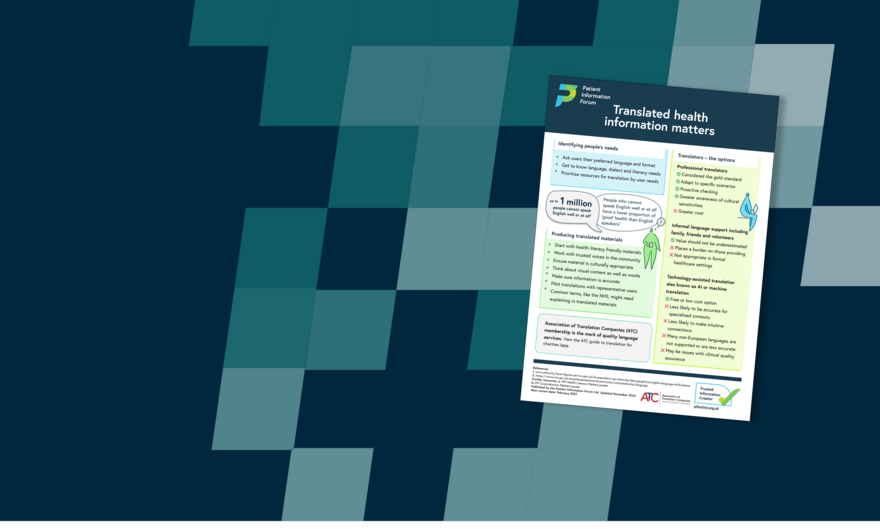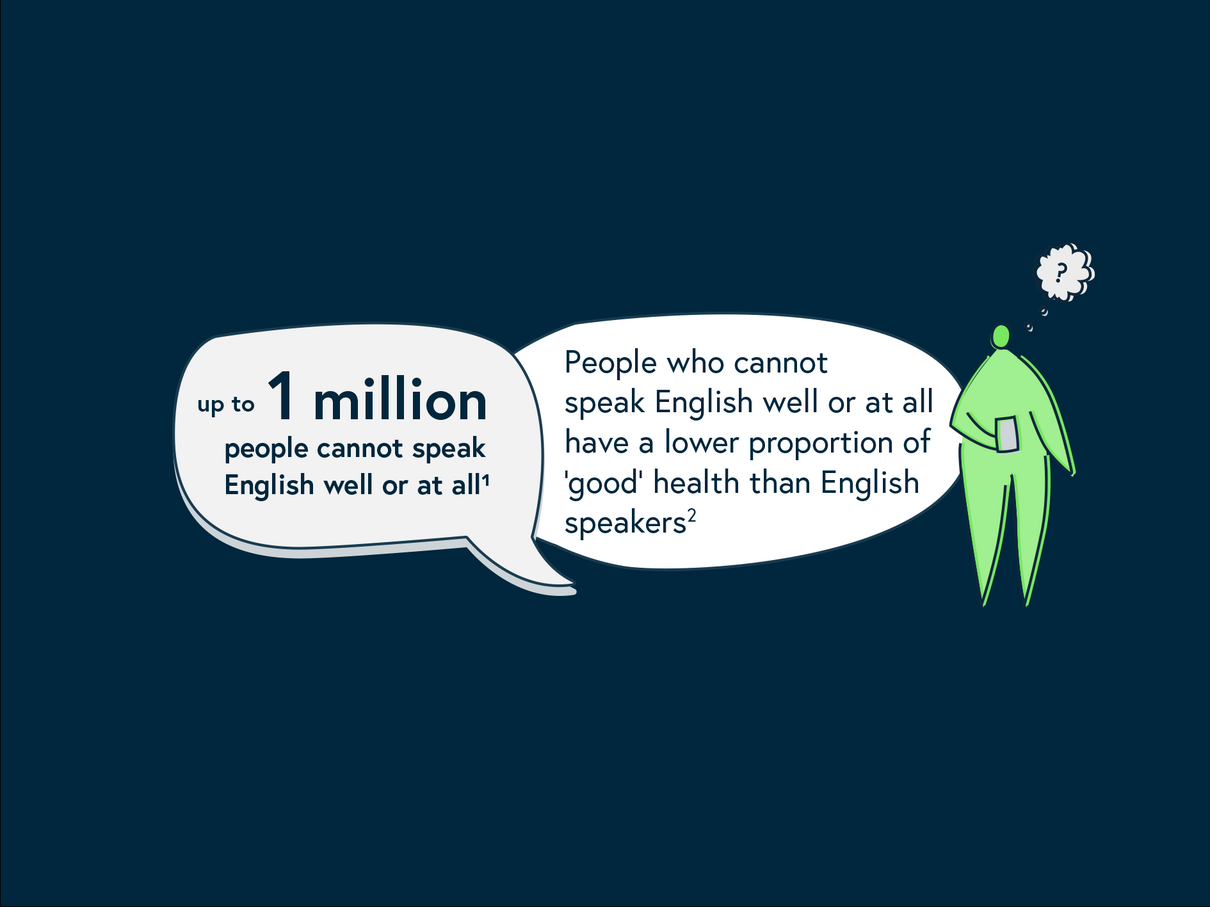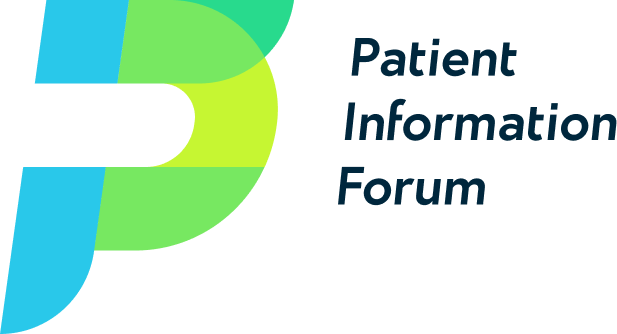
Translated health information matters
A quick checklist of what to consider when starting health information translation. It outlines the strengths and weaknesses of the different options available and signposts useful guidance from PIF partners the Association of Translation Companies.
Identifying people's needs
- Ask users their preferred language and format
- Get to know language, dialect and literacy needs
- Prioritise resources for translation by user needs
Up to one million people cannot speak English well or at all[1]. People who cannot speak English well or at all have a lower proportion of ‘good’ health than English speakers [2].
Producing translated materials
- Start with health literacy friendly materials
- Work with trusted voices in the community
- Ensure material is culturally appropriate
- Think about visual content as well as words
- Make sure information is accurate
- Pilot translations with representative users
- Common terms, like the NHS, might need explaining in translated materials
Translators – the options
Professional translators
Pros
- ✅ Considered the gold standard
- ✅ Adapt to specific scenarios
- ✅ Proactive checking
- ✅ Greater awareness of cultural sensitivities
Cons
- ❌ Greater cost
Informal language support. This includes friends, family and volunteers
Pros
- ✅ Value should not be underestimated
Cons
- ❌ Places a burden on those providing
- ❌ Not appropriate in formal healthcare settings
Technology-assisted translation also known as AI or machine translation
Pros
- ✅ Free or low cost option
Cons
- ❌ Less likely to be accurate for specialised contexts
- ❌ Less likely to make intuitive connections
- ❌ Many non-European languages are not supported or are less accurate
- ❌ May be issues with clinical quality assurance
Association of Translation Companies (ATC) membership is the mark of quality language services. View the ATC guide to translation for charities here.
References
- www.ethnicity-facts-figures.service.gov.uk/uk-population-by-ethnicity/demographics/english-language-skills/latest/
- www.ons.gov.uk/peoplepopulationandcommunity/culturalidentity/language
Further resources
Published by the Patient Information Forum Ltd.
Originally published February 2022. Updated November 2024. Next review date: February 2027.

Translated health information matters
Translated health information matters
